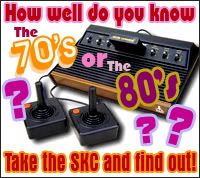When Combo Was King
By Roger Rigor
As a small four year old tyke during the late fifties, I can still vividly recall our Camp McKinley (now Fort Bonifacio) days how an elder brother and his gaggle of Elvis wanna-bes would perform at a local theater, showing off their latest vocal impressions of rock and roll---harmonies from the Brothers Four, or a Buddy Holly tune, or a Ricky Nelson bit. A hollow guitar and some good amount of gutsy attitude was all it took for them to rock a house full of admiring teen belles.
Those days at our house, aside from Presley favorites, the songs of Pat Boone, Harry Belafonte, Johnny Mathis or the Everly Brothers would lord over the radio. When we moved to San Juan, Rizal, after my father retired from the military, my other elder brothers began what was known then as the decade of the combo. And San Juan eventually became the Philippine version of Liverpool, England where many of its young teenagers would form Manila's most popular bands in the years to come. In many respect, Manila was to become the hotbed of the world’s best "copycats" of American music, especially rock and roll.
My earliest experience of combos began when friends and neighbors of my brothers would come to our basement in San Juan, set up their make-shift instruments and began singing at their heart’s content: a gasoline container with a bass string attached to a long plank of wood substituted for the sound of the "bajo de arco". A snare drum snagged from a local school band room securely placed on a chair was the only "drum set", with drumsticks that clearly showed overuse from many marching band performances. One of the guys would bring his hollow guitar, and they’re set for a daylong session of trying to sound like that raspy sound coming out of a 45-rpm vinyl record. It would be a busy weekend session if one of the guys would come ecstatic that he had gotten a long playing album straight from the U.S. Every single one of those songs would be practiced ever so diligently and played. Soon, they'd be ready to play for a party. They now have a play list of songs to perform with. And that party would be at the same basement. How the house would rock for hours. Even if the band had ran out of songs to play, it was fine to replay the play list over and over again.
It would be some months later when the rickety instruments would be replaced with flashy red and black Fender electric guitars and complete drum sets that would sparkle in the dark. My brothers had found a manager. I can still remember when they performed as a full-fledged combo at a birthday party at very same basement. The whole house would literally shake with the sound of the combo. My two other younger brothers and I would sneak out to the stairs and just ogle at the site of it all.
Those guys were the center of the party, chorusing their instruments to the sound of The Ventures or the Shadows, and then would have a go at the latest Beatles song, or mellow down with a Chad and Jeremy piece. It was easy for the night to just slip by so quickly.
And so it was. The combo era has arrived and became a bigger spectacle in Manila's teen world. And most of those who were known then were from the little town of San Juan. The Ramrods, The Electromaniacs, The Intruders, The Downbeats, and The Hi-Jacks to name a few were the early bands that were most sought after. In fact, the Downbeats were renowned to have opened for the one and only Beatles concert at the Rizal Memorial Stadium. Battle of the bands became a thing in Manila. Bands would try to out-duel each other. Events like these would be held at college auditoriums all over the city almost every weekend.
The evolution of Pinoy band music got even more pronounced in the days of the club culture. This was especially so when Subic Bay Naval base in Olongapo City became a regular stop-over for American battle ships on the way or coming back from Vietnam. Olongapo City was the place to be for military R&R and its bands were to be the best in Asia. Olongapo strip had two sides to it: Rock and roll and soul. The nature of the bands here were quite different from their Manila counterparts: band music was a case of fierce competition and a source of serious livelihood. And that is why bands from Olongapo sounded so much like the record they even managed to look like the guys from the record. If it was great band music that you wanted, it was here that they thrived. Although Manila bands were more attuned to the social culture of the all-girls or all-boys college party events in the early days, the Dewey Boulevard strip by Manila Bay eventually caught up to emulate the intensity and popularity of Olongapo City.
The band hysteria would only get bigger as the recording industry started to grow. Suddenly, bands became icons to the fledgling Manila Sound. The copycat combo was beginning to fade from the scene. Most would now find their way to contractual stints in Japan. Not only would bands now become more originally Filipino, they would burst into the music scene, not only in Manila, but other Asian cities as well. Its original music, in the late seventies, even made its way to the U.S.
The Ihaw-ihaw Jam project, made up of Seattle's different band personalities and groups will attempt to relive the days of the combo come December 16th Saturday, at the Filipino Community of Seattle as part of their fundraising effort to raise disaster funds for the Philippines. Twist and Shout 4, in cooperation with the Life After Forty Basketball League will feature the sound of the late fifties and the early sixties. It will be an attempt to again create a party scene reminiscent of the mini-skirt, hip hugger days in Manila, where invited "combos" will try to out-duel each other with their rendition of vintage rock and roll, including riffs from the Ventures and the Shadows. Welcome back the sound of Buddy Holley, the BeeGees, the Monkees, Ricky Nelson, Brothers Four, Chad and Jeremy, Everly Brothers, Connie Francis, Cliff Richard, etc.
If you feel like reliving those days, this is one eventful party you will not want to miss! 
Technorati Tags:50s, music, nostalgia












1 comment:
Mr. Rigor, thanks I enjoyed this piece! Oo nga naman, Dewey Blvd.(Roxas Blvd.) was THE area where all the popular clubs were; Where you would bring clients you needed to entertain; where you would go for the best steak house or for "smorgasboard".
When TVJ spoofed Basil's "Hanggang sa Dulo ng Walang Hanggan", they sang it as "Hanggang sa Dulo ng Roxas Boulevard".
Post a Comment